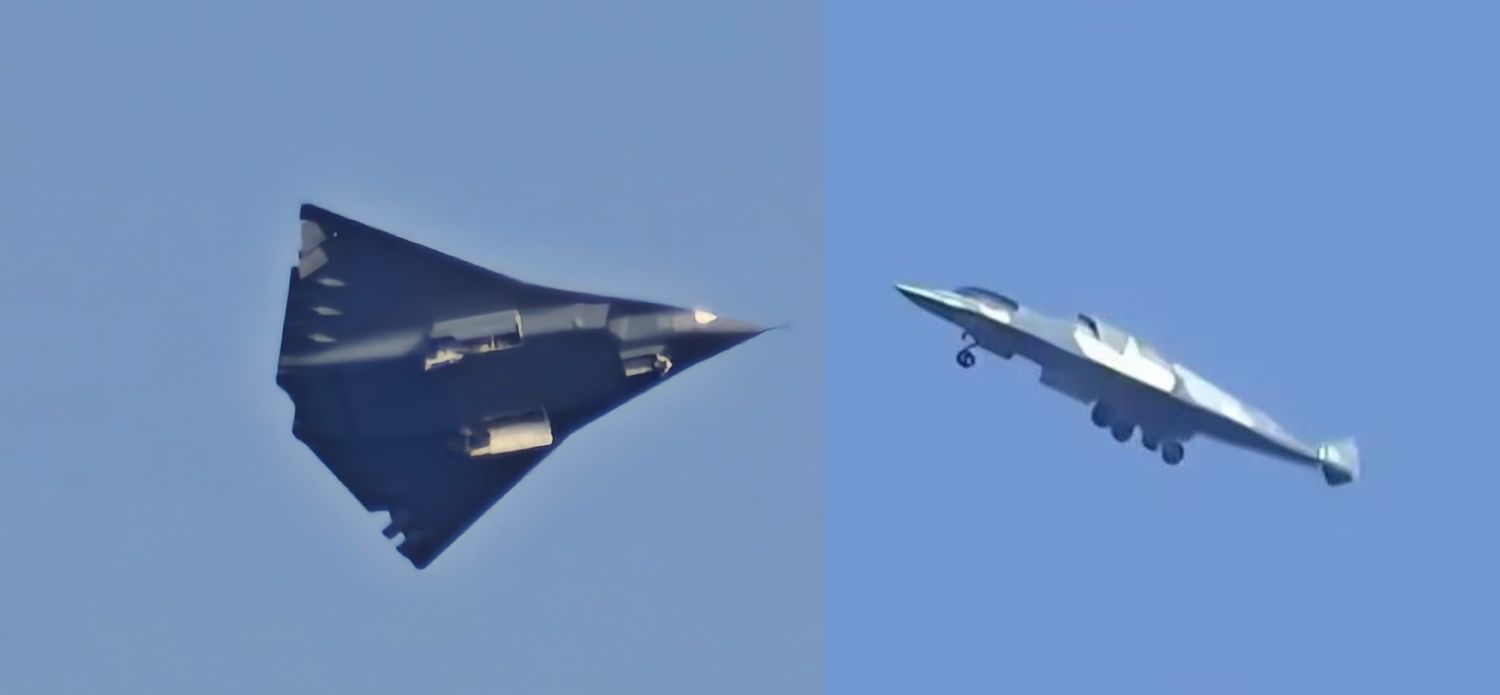China has begun flight tests of its sixth-generation fighter prototype or technology demonstrator, a milestone that has gained widespread attention across social media. The tests were captured near the Chengdu Aircraft Industry Group (CAIG) headquarters, where a J-20 two-seat fighter was seen flying alongside the new prototype as a chase aircraft.

With a design reminiscent of some conceptual proposals for sixth-generation fighters under the U.S. NGAD (Next Generation Air Dominance) program, the new Chinese aircraft features a tailless flying wing configuration, twin engines (or possibly tri-engine?), and a single-seat cockpit (with possible options for two-seat or even unmanned versions?). This design seems optimized for low observability across multiple radar bands, allowing it to maintain a reduced radar signature from various angles, as well as to achieve sustained supersonic speeds at high altitudes.
The absence of a conventional vertical stabilizer is compensated for by a sophisticated arrangement of control surfaces. Each wing features five control surfaces along the trailing edge, including large wingtip flaps. These flaps not only help control yaw but, when deployed simultaneously, also function as efficient aerodynamic brakes, improving performance during maneuvers and deceleration.

The new Chinese fighter appears to be considerably larger than the chase J-20, suggesting a design with generous dimensions. This could indicate a focus on high fuel capacity and a spacious weapons bay, both crucial for operations in the Pacific theater, where range and autonomy are key factors. This perception is reinforced by the presence of a double-wheel rear landing gear, similar to the MiG-31 «Foxhound», designed to support the weight of a heavy aircraft.
Hell Yeahh
This should be PLAAF 6th gen Fighter or JHXX bomber platform pic.twitter.com/CPBOUsxVKZ
— Húrin (@Hurin92) December 26, 2024
Innovative Air Intake Configuration
One of the most striking features of the new fighter is the presence of three air intakes for the engines. Two of them are located in the traditional positions on the fuselage sides, while a third intake is positioned on top of the fuselage, just behind the cockpit. This novel configuration could provide several significant advantages:
- Thermal Management: The upper air intake could be designed to supply a large volume of fresh air to critical systems such as next-generation radars, electronic countermeasure systems, or even to cool high-heat-generating weapons systems, like high-powered lasers or microwave weapons.
- Maneuverability, Power, and Optimization: The upper intake might be used to modify the airflow over the fuselage at high speeds, improving stability and maneuverability of the aircraft in specific flight regimes. Additionally, it could help optimize airflow for different phases of flight, such as takeoff, high-speed cruising, or low-altitude combat.
- Radar Signature Reduction: The distribution of air intakes could allow for the design of smaller or more discreet intakes that are less detectable by radar waves. This would contribute to greater stealth from the front, side, and bottom of the aircraft, making it harder for enemy radar systems to detect the fighter.
- Third Engine Possibility: Some analysts speculate that the aircraft could be powered by three engines rather than the conventional two. This unusual configuration could be aimed at providing additional power for extreme combat maneuvers. Alternatively, it might involve a different type of engine, possibly a hybrid or specialized engine, optimized to improve the aircraft’s performance in specific flight regimes, surpassing the capabilities of conventional turbofan engines.
CAC‘s 6th generation prototype/demonstrator seen standing on the runway pic.twitter.com/VaxEVPexZJ
— @Rupprecht_A (@RupprechtDeino) December 26, 2024
A Major Leap in China’s Aerospace Technology
Although very little is known about this heavy fighter design beyond what can be observed, it is enough to confirm that China has taken a major step forward in the development of its aerospace technology.
With this prototype, China becomes the second nation to have flown a combat aircraft that can be considered part of the “sixth generation” category, after the United States, which is moving forward with testing of the B-21 Raider bomber and the NGAD program’s technology demonstrator, which would have first flown in 2020.


Comentarios
Para comentar, debés estar registrado
Por favor, iniciá sesión